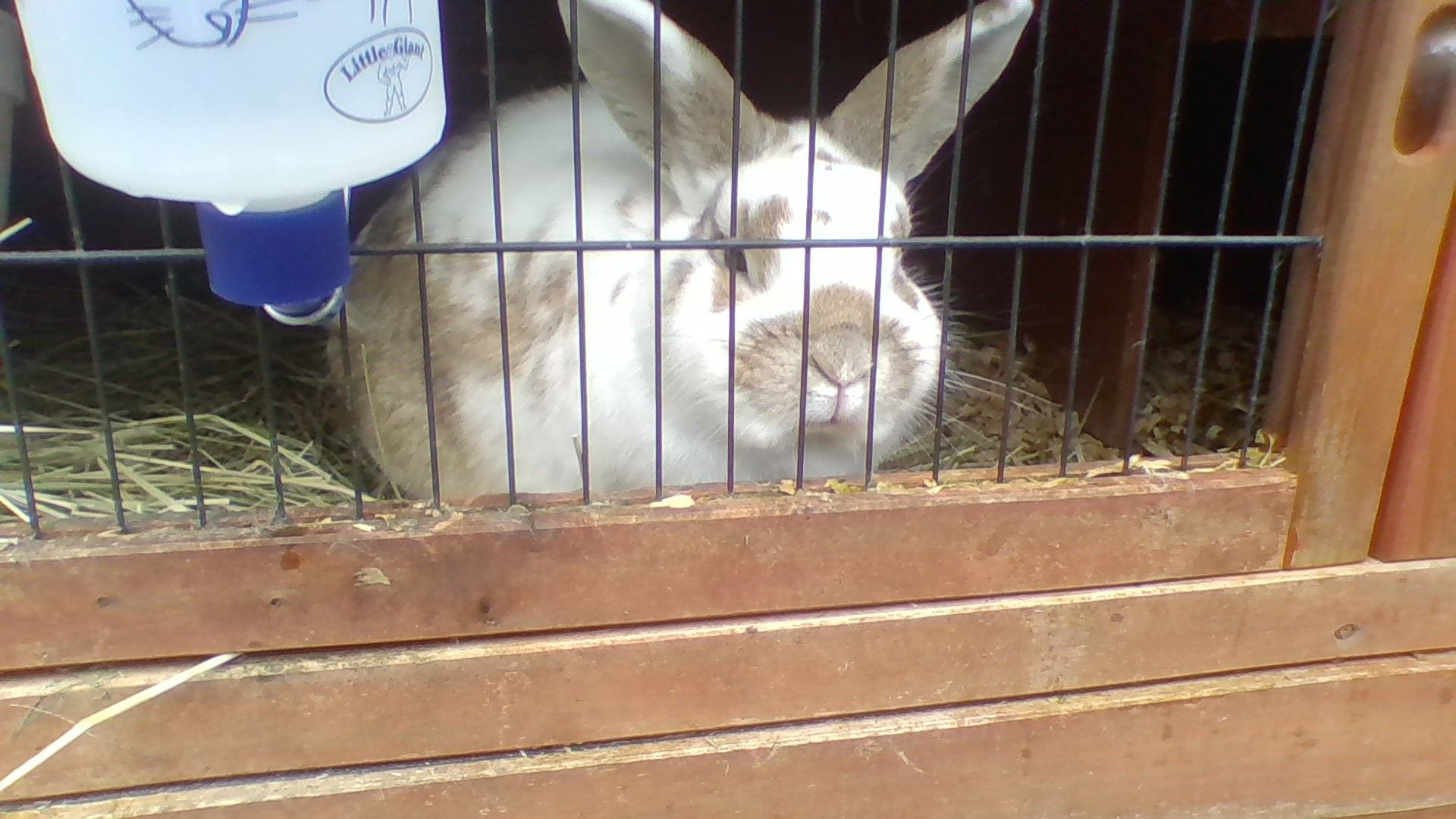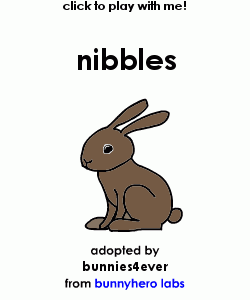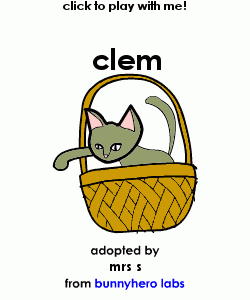Monthly Archives: September 2018
The Lovely Life of Nibbles

Nibbles is my rabbit. He is 7 years old. I got him when he was 5. And his birthday is July 10th. Nibbles is a New Zealand rabbit. He does not like people, but i have tried taking him on a walk twice. He does have a leash but he does not like it. He has got the leash off once over his head.
Nibbles is the new Houdini in my opinion, because he has used his teeth to get out of his cage 5-10 times. Once he has even been out of his cage for one hole night. But my dad caught him in the morning. So because of all this we had to wire his cage door shut.
His favorite weed is broadleaf. I actually did a science experiment with him and he preferred broadleaf to blackberry, dandelion and hairy bittercress.

Mountain Cottontail
The mountain cottontail is a small rabbit. Hind legs are long. Ears are short and rounded at the tips. It has pale brown fur on the back. It also has a pale brown skin on the back of the head, black-tipped ears, a white grey tail, and a white underside. The brown nape on the back of the head is a smaller size of the Snowshoe Hare, helping to distinguish the two separate species from each other.
Mountain cottontails eat grasses such as wheat grasses, needle and tread, Indian rice grass, cheatgrass, brome, bluegrass, and bottlebrush squirreltail. Some times depending on the area they might eat shrubs such as Big sagebrush, rabbitbrush, and saltbrush. And in winter they eat more woody plant parts such as bark and twigs.
The nest of mountain cottontail is reported to be a hole lined with fur and dry grass. The top of the nest is covered with fur, grass, and small sticks. The average gender ratio in Oregon was 1 male to 1.05 females. Depending on location, the breeding season will vary but ranges through February to July, and possibly later in warmer temperatures. Average litter sizes average 4–6 bunnies per litter. The gestation period for this cottontail is 28–30 days.
Predators of the Mountain Cottontail include snakes, birds of prey, owls, coyotes, bobcats and martens.
Information from, https://en.wikipedia.org/wiki/Mountain_cottontail and
http://www.theanimalfiles.com/mammals/rabbits_hares_pikas/mountain_cottontail.html
Satin Rabbit
Ever want to know about Satin Rabbits? Well now you can, if you read on that is.
The history of the Satin Rabbit is similar to that of the Rex breed.
The first satinized rabbit fur appeared in Havana Rabbits owned by the well known and dedicated Mr. Walter Huey in 1934.
Today Satin Rabbits can be found in 11 different colors black, blue, broken, Californian, chinchilla,
Chocolate, copper, otter, red, Siamese, white and the 12th lilac is under development.
Well, I hope you probably have learned something new.
Information from “A Bunny World” a magazine made by me.
Riverine Rabbit
The riverine rabbit is the most endangered mammal in South Africa and the 13th most endangered in the world. Its scientific name is Bunolagus monticularis, and its common name is Riverine rabbit. Riverine rabbits have that common name because they love living and being by the rivers there. They also has at least two nicknames: Bushman hare and bushman rabbit. They are 34-48 cm. Riverine rabbits don’t weigh as much as the rabbits that you would usually see in your garden. A male Riverine rabbit is about 1.5 kilograms (3.3lbs.) and a female Riverine rabbit is about 1.9 kilograms (4.19 lbs.). New born riverine rabbits weigh only forty to fifty grams (0.09-0.11 lbs.). Riverine rabbits also weigh less than a small bag of cooking flour. Being this small makes them a target for kidnapping. You can tell that a you found a riverine rabbit because they have a brown stripe running down their lower jaw. Riverine rabbits also have very long ears and they’re fur is soft and silky. Their bodies, aside from their bellies and necks, is dark brown with a lot of black speckles all over their body. Riverine rabbits’ fur on their bellies and neck’s is creamy colored. They also have a light brown tail with a black tip. Riverine rabbits also have a white ring around each eye. Riverine rabbits have short legs which have a lot of fur covering them. Riverine rabbits are herbivores meaning that they only eat plants and berries. Riverine rabbit eats leaves and grass at night and they eat their droppings during the day. When they eat their droppings it’s good because it gives them vitamin B. Vitamin B includes calcium and phosphorus. Riverine rabbits live in tropical, desert, dune and scrub forest.
Riverine rabbits are critically endangered. This is not good because they only have one or two babies per year but usually 1 while mountain cottontails have 15- 25 babies per year. Riverine rabbits are critically endangered because of natural predators, overgrazing and erosion, fire, habitat destruction, getting hit by cars, natural disasters, competition for food and shelter, and irresponsible hunting. They are also very slow, so they are very easy to trap or for predators to catch. Riverine rabbits sometimes get caught in traps that farmers set to catch pest that they don’t want there. People want the land that riverine rabbits live in because it has extremely rich soil, so they want the land for farming and stuff like that. There are only 400 individuals left in the wild. Astrophysicists took a break from finding galaxies to find riverine rabbits, said, “You can poke them with a pillow and practically kill them.”
Why save the riverine rabbits? If the riverine rabbits go extinct then the ecosystem will be unbalanced and most of the plants it ate would grow uncontrollably, and all the predators that ate it would either starve or must find something else to eat, which may be rough. I also really love rabbits and a lot of other people do to. They wont hurt people like a lot of other animals do so it makes it a lot easier to save. And since I really love rabbits I think the more rabbits left the better. That’s the only rabbit in South Africa, so we should try as hard as we can to protect them.
We don’t know very much about the riverine rabbit and they are extremely hard to find so if we don’t save the riverine rabbits we may never know very much about them before they go extinct. On news 24 Christie Bragg said, “If you save the rabbit and you’re protecting its habitat in that area, you’re not only protecting the rabbit, you’re protecting the communities of plants, of insects, of other biodiversity and, through out rehabilitation program, we’re actually provisioning ecosystem services.”
So, I think that we should try to save the Riverine rabbits because if we don’t then we might not know any more about them before they go extinct, the plants will grow uncontrollably, and they are the only rabbits living in South Africa, so if we don’t keep them alive then we will lose the only rabbit in South Africa. (And let’s face it they’re adorable).
Cite Page
Books
McGavin, George. Endangered: Wildlife on the Brink of Extinction. Cassell Illustrated, 2006
Miller, Sara Swan. Rabbits, Pikas, and Hares. Franklin Watts, 2002
Websites
http://www.iucnredlist.org/details/3326/0
https://www.africanbudgetsafaris.com/blog/6-endangered-animals-to-see-on-safari/
https://en.wikipedia.org/wiki/Riverine_rabbit
https://www.news24.com/Green/News/Rabbit-indicates-environment-damage-20121113
http://www.waza.org/en/site/conservation/waza-conservation-projects/riverine-rabbit-conservation
http://eol.org/pages/311977/details
https://www.nrdc.org/onearth/astrophysicists-take-break-finding-galaxies-look-rare-rabbits
Eastern Cottontail Rabbit
The eastern cottontail rabbit is a magnificent creature. When they are baby’s the have a white stripe on the top of its head. When it’s an adult the white stripe goes away. They live in Canada and all the way down to South America.
The eastern cottontail is an herbivore. It eats a variety of different plants including grasses, clover, fruits and vegetables. In the winter it eats the woody parts of plants like the twigs and the bark of brambles, birch, oak, dogwood and maple trees.
The eastern cottontail has to contend with many predators. The predators are domestic cats and dogs, foxes, coyotes, bobcat, weasel, raccoon, mink, great horned owls, barred owls, hawks, corvids and snakes.
In New England breeding occurs from March to September. In New York the breeding season occurs from February to September, in Connecticut from mid-March to mid-September. In Alabama the breeding season begins in January. In Georgia the breeding season lasts nine months and in Texas breeding occurs year-round. Populations in western Oregon breed from late January to early September.
Information from https://en.wikipedia.org/wiki/Eastern_cottontail


